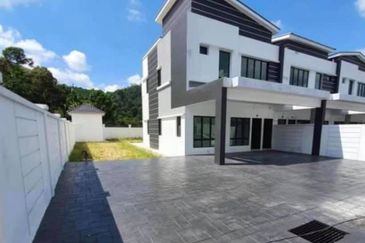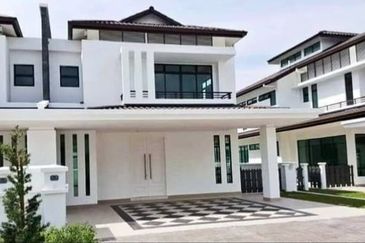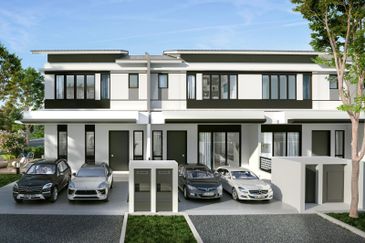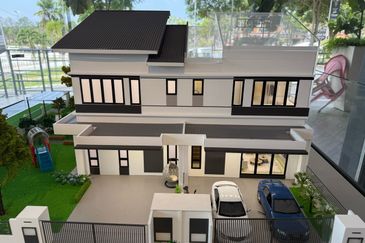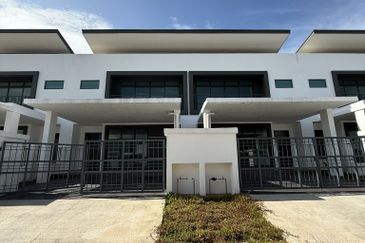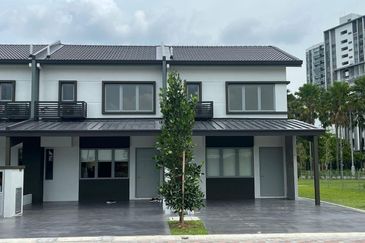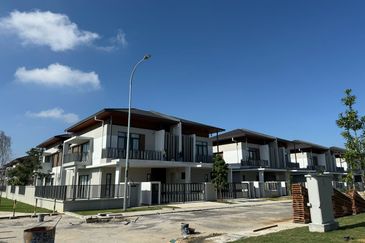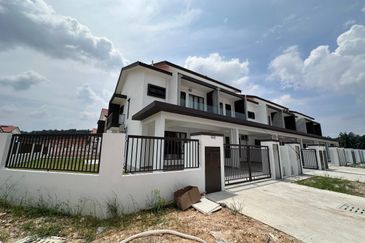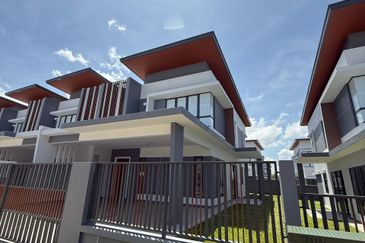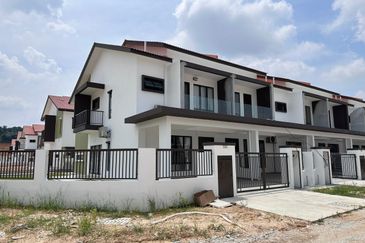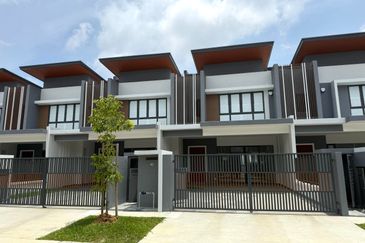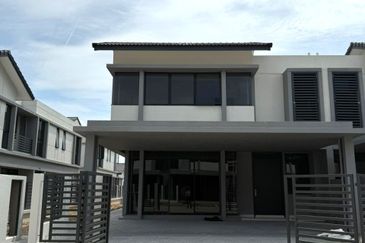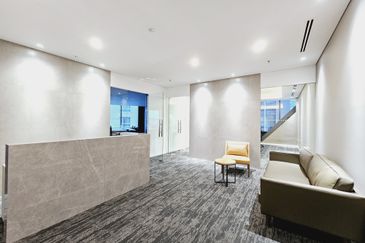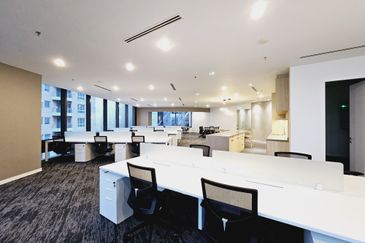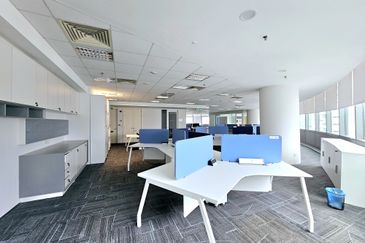
KUALA LUMPUR (Nov 20): Big wide smiles are likely plastered on the faces of Vivocom International Holdings Bhd’s shareholders as the company’s share price more than doubled within a month.
The stock shot up to a four-year high of RM2.05 yesterday, from its all-time low of 15 sen in March last year.
It is neither venturing into rubber glove manufacturing nor partnering with any agent to distribute Covid-19 vaccine.
While Mah Sing Group Bhd is diversifying into the rubber glove business to cushion the impact of the prolonged downcycle in the property market, Vivocom decided to go big in property development.
About two weeks ago, Vivocom struck a deal with its substantial shareholder Datuk Seri Chia Kok Teong to buy 45% of V Development Sdn Bhd for RM171 million, through a combination of cash, and the issuance of consideration shares and/or irredeemable convertible preference shares.
The deal is deemed a related party transaction as Chia is Vivocom's substantial shareholder with a 23.04% stake. He also controls a 96.8% stake in V Development.
On top of that, Vivocom has inked a subscription agreement with Golden Key Portfolio Sdn Bhd. Under the agreement, Vivocom will place out 169.94 million new shares or 30% of its issued share capital, at a subscription price of 35 sen per share, to Golden Key.
Meanwhile, Vivocom undertook a share consolidation exercise recently. It consolidated every 10 shares and 10 warrants into one share and one warrant, respectively. This caused its issued share capital to be adjusted to 566.45 million shares from 5.66 billion, while its Warrants E (2018/2023) were adjusted to 113.29 million from 1.13 billion previously.
Since the announcements, Vivocom’s share price has rocketed.
Vivocom, which also recently changed its financial year end to June 30, reported a net profit of RM4.37 million in the 18 months ended June 20, 2020 (FY20), thanks to contribution from its property development business. In contrast, it announced a net loss of RM68.74 million for the financial year ended Dec 31, 2018 (FY18).
The company is involved in a wide range of businesses, from property development and construction, to aluminium design, fabrication and telecommunications engineering. There is a reason for such a diversified portfolio.
In fact, its latest acquisitions might spark a sense of deja vu among the investing fraternity, particularly those who have been keeping track of the company. Some may recall the stock's nail-biting roller coaster rides over the past 10 years.
Let’s turn the clock back to 2005, the year the company made its debut on Bursa Malaysia.
If the name Vivocom does not ring a bell, its stock code 0069 may jig investors’ memory. The company was listed under the name I-Power Bhd in January 2005, before it became Instacom Group Bhd in 2012 after a reverse takeover (RTO). It assumed its current name — Vivocom International Holdings Bhd — in 2016, after another asset injection.
I-Power was an IT solutions provider founded by then-CEO Jason Chia Kok Chin. Its initial public offering (IPO) was priced at RM2.34 per share (adjusted). The counter reached an all-time high of RM9.75 in two months, according to Bloomberg.
I-Power’s earnings then, however, did not grow as swiftly as the climb of its share price. In fact, the company sank into deep losses. It accumulated losses of RM65.02 million by the financial year ended June 30, 2010 (FY10). By August 30 that year, its share price had plummeted to 64 sen.
Given the financial stress, the company found a white knight, telecommunications tower builder Instacom Engineering Sdn Bhd, to salvage it. Instacom undertook a reverse takeover exercise in 2011.
Consequently, I-Power disappeared from the radar and Instacom came into the picture in 2011 — six years after the IPO.
Chia was subsequently redesignated executive director, while Anne Kung Soo Ching became the CEO. Chia retired from his post on Dec 18, 2012.
After the asset injection, the company’s prospects seemed to turn brighter as it secured an RM205 million contract for telecommunications infrastructure works in Sarawak.
Its share price also regained its upward momentum and surged to a high of RM1.94 in May 2013, from the trough of 36 sen in August 2011, on news of the RM205 million contract.
In August 2013, the company’s executive director Thomas Ngu Sing Hieng told the media that Instacom wanted to build a 3,000-km fibre-optic cable network to link up the whole of Peninsular Malaysia in three to five years. That further fuelled its share price rally.
Instacom then delivered a good set of financial results. It returned to the black with a net profit of RM26.22 million in the financial year ended Dec 31, 2013 (FY13), after three consecutive years of fiscal losses.
Unfortunately, the earnings were not sustainable. The company’s net profit shrank to RM3.7 million in FY14 and RM8.79 million in FY15. The poor earnings performance dragged down its share price back to below 50 sen in June 2015, after the hype in August 2013.
And it seems the company did not build the 3,000-km fibre-optic cable network. The RM205 million contract also did not contribute much to its earnings.
To cultivate a new revenue stream, the company opted for an asset injection, like in 2011.
Instacom proposed to acquire a 35% stake in aluminium window and door manufacturer Neata Aluminium (M) Sdn Bhd for RM58.8 million in late 2014. The deal was settled via the issuance of new Instacom shares. One of the four vendors was Chia Kok Seng, who owned a 13.1% stake in Neata.
About six months later, Instacom announced that it wanted to raise its shareholding in Neata to 78.6% by buying an additional 43.6% stake from Golden Oasis Resources Sdn Bhd for RM73.58 million. The acquisition was settled with RM13 million cash and the issuance of new shares.
Subsequently, Golden Oasis became the single largest shareholder in Instacom with a 24.5% stake. This was the second time a new controlling shareholder emerged in the 10 years since it was listed.
In November 2015, Instacom appointed Datuk Seri Dr Yeoh Seong Mok as joint-CEO. Yeoh is the founder of Vivocom Enterprise Sdn Bhd.
The company then assumed its current name, while Instacom became part of its history.
Again, the stock price regained its upward momentum. It quadrupled to RM2.08 in November 2015, a steep climb from 50 sen, in just three months.
It further surged to RM2.30 in May 2016, after its quarterly results were released.
Vivocom reported its strongest ever earnings for FY16 (ended Dec 31) of RM49.4 million, due to a six-fold jump in revenue at its construction segment to RM268.54 million. Revenue from its aluminium business also jumped more than seven times to RM45.69 million, due to “the roll-out of several major projects during the year”.
Judging by the stellar set of results, the company stood a chance of turning around after the previous attempt.
Unfortunately, the same fate seemed to befall the company.
The rise in share price was again short-lived as the the earnings performance failed to sustain its momentum. It reported a lower net profit of RM14.5 million in FY17, and a loss-making FY18 with RM68.74 million worth of losses due to slower construction pace at its projects, and an impairment of RM32.42 million during the year.
A new controlling shareholder emerged again in the company in January this year — the third time since its IPO in 2005.
Kok Teong acquired 1.31 billion shares or a 23.04% stake in Vivocom via an off-market transaction. Then, he was made the chief executive director. Kok Teong now wants to inject the property development business — V Development — into the listed company.
Will the fourth asset injection yield better results than those in the past? As the saying goes, only time will tell.



